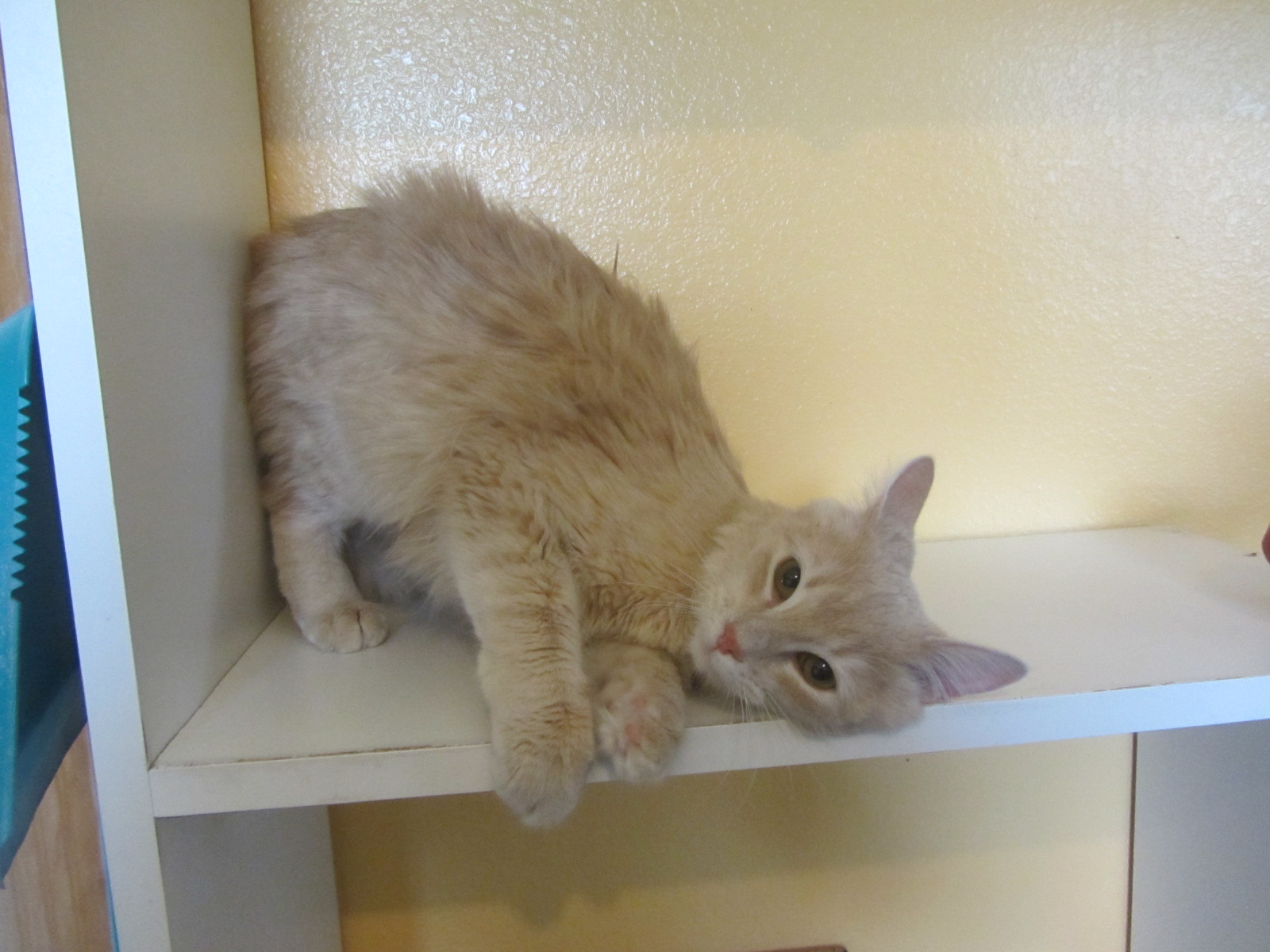
25 Apr Second Chance: Cat Fatkins Diet
Is your cat fat?
Is your furry feline sporting something extra on the midriff?
Are you in denial and pretending it is just extra fur to keep her warm?
You are not alone.

Powder
There is a 55 percent chance your cat is too chubby. According to Sheltering Magazine, that is the percent of adult pet cats who are overweight, with half that number being classified as obese, scoring 8 or higher on a 9-point body condition scoring chart.
Why are cats getting fat?
In a word, lifestyle.
In their mice-eating days of old, domestic cats had to work really hard for that one little boost of calories. On the other hand, today’s modern house cat spends most of his day looking for something to do and too often that becomes parking himself in front of an overly generous kibble bowl. Pet parents often compound the problem by interpreting their kitty’s requests for attention as demands for food and showering him with treats, when what he really needs is a good workout.
The consequences can be serious.
Even a few extra pounds can burden the heart, raise blood pressure, and cause arthritis by increasing stress on the joints and ligaments. Obese cats, unable to clean themselves properly, frequently suffer from painful rashes and urinary tract infections. And overweight cats are four times more likely to develop diabetes.
Everyone knows someone who lost 10 pounds in 10 days on a juice fast or cabbage soup diet. But in feline shrinkage, there are no quick fixes. Cats who reduce too quickly can develop life-threatening hepatic lipidosis (fatty liver disease), so weight loss must be carefully monitored. Done correctly, it can take more than a year for a real heavyweight to reach his goal, but the loss should add years to your cat’s life.
Successful weight loss starts with calorie control.
“When humans measure out dry food for a cat, their eyes are bigger than reality,” says veterinarian Lisa Pierson, who maintains the website catinfo.org. “They don’t understand that a half cup can be over 300 calories. Most sedentary housecats only need about 200-225 calories a day.”
In addition to calorie control, you want to get your cat burning more calories by encouraging him to play and move. Making playtime a regular part of your cat’s day will not only decrease his midline but also enhance your bond and his sense of well being.
Of course – if you have an overweight pet you should take him to your veterinarian to make sure there aren’t any medical factors contributing to the issue – and have your vet recommend the best weight loss program for your pet.
Veterinarians will often suggest switching to high-protein, low-carb food as well as making your cat work for its food through the use of “food puzzles,” which the cat must roll or manipulate to get treats out of. The puzzles slow down their eating while tapping into their natural instincts to hunt and forage.
My name is Powder, and I am an adorable and affectionate young cat here at Second Chance waiting for my forever home. I am under a year of age and very active and fit (so if you adopt me I expect you to help me stay that way). I love people and will rub up and purr on anyone I meet. I get along well with other cats and am particularly fond of those that will play with me.
Editor’s note: It’s no secret. The Telluride region is dog heaven. Well, pet heaven. Unless you are one of our furry friends who gets caught in the maw of neglect and abuse. Then heaven is on hold until Second Chance Humane Society comes to the rescue. Second Chance is the region’s nonprofit dedicated to saving animals’ lives and promoting responsible pet parenting and human-animal bond. In her weekly blog, executive director Kelly Goodin profiles at least one, generally two of the many animals now living at the no-kill shelter, Angel Ridge Shelter, a dog and a cat, hoping to find them loving permanent homes. The column is sponsored by Ted Hoff of Cottonwood Ranch & Kennel, who from time to time exercises his skills as a dog whisperer, partnering with Kelly and her staff to help train a particularly challenging animal.

Ted Hoff & Magnificent Mae
By the by, there is no better place to park your pup or get your pup (or adult dog) trained than Cottonwood whenever you head out of town (for locals) or are heading to town and staying somewhere that does not allow pets. Consider joining Ted’s Very Important Dog (VID) Club for added benies. (Details on Ted’s website.)
Second Chance Humane Society Animal Resource Center and Thrift Shop are both located in Ridgway, but service San Miguel, Ouray & Montrose Counties. Call the SCHS Helpline at 626-2273 to report a lost pet, learn about adopting a homeless pet, or about the SCHS Spay/Neuter, Volunteer, Feral Cat, or other Programs. View the shelter pets and services online: www.adoptmountainpets.org
Vetting the Vet: Dr. Michelle Dally, DVM, J.D. is Medical Director of Second Chance Humane Society. She also has a private practice, Dally Veterinary Medicine, 333 S. Elizabeth Street, Ridgway, Colorado. Her service area is San Miguel Mesas, Placerville, Ridgway, Ouray, and Montrose. For more on Dr. Dally, go here.

Michelle & Wallowby


Sorry, the comment form is closed at this time.